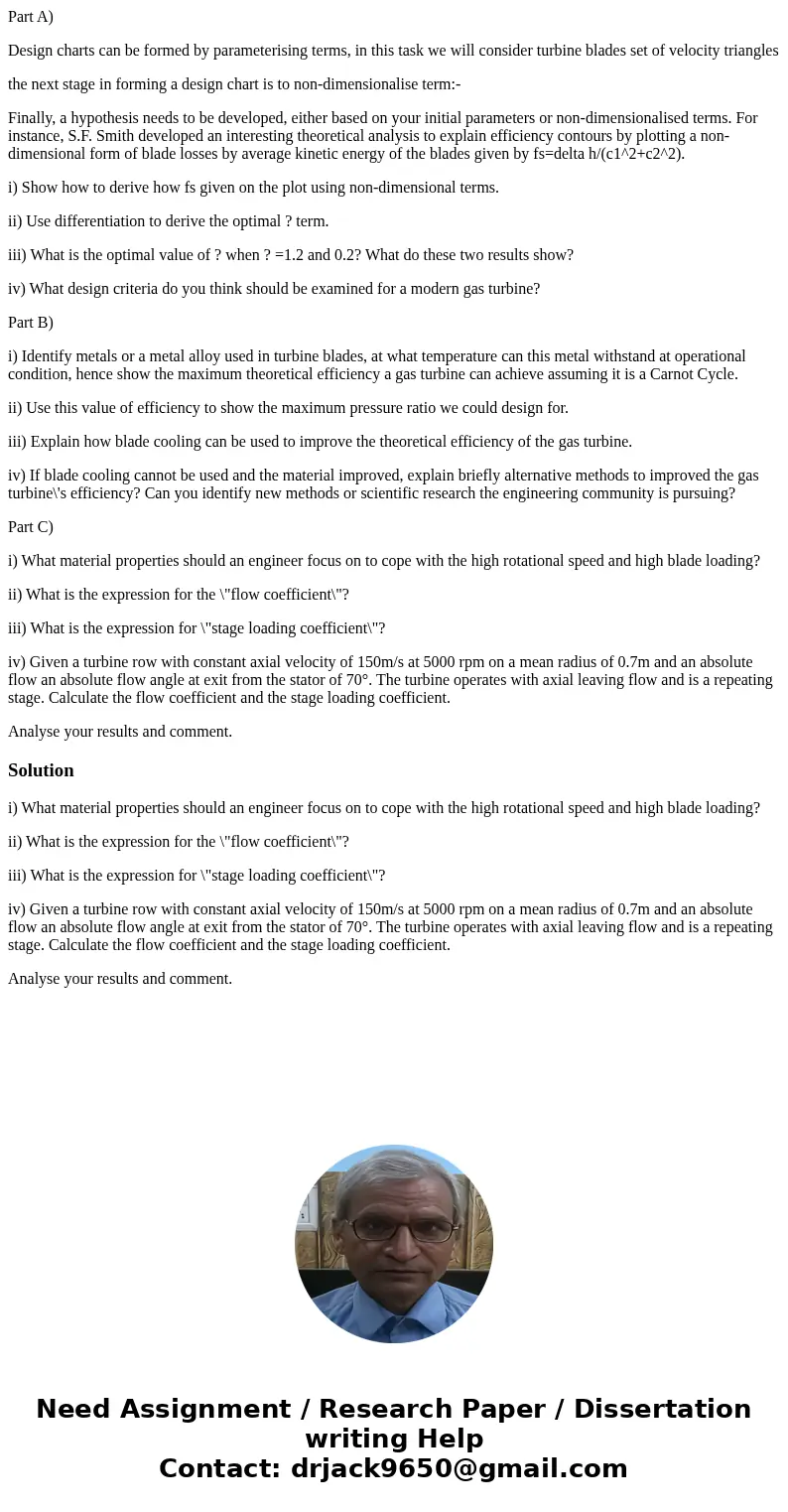Part A Design charts can be formed by parameterising terms i
Part A)
Design charts can be formed by parameterising terms, in this task we will consider turbine blades set of velocity triangles
the next stage in forming a design chart is to non-dimensionalise term:-
Finally, a hypothesis needs to be developed, either based on your initial parameters or non-dimensionalised terms. For instance, S.F. Smith developed an interesting theoretical analysis to explain efficiency contours by plotting a non-dimensional form of blade losses by average kinetic energy of the blades given by fs=delta h/(c1^2+c2^2).
i) Show how to derive how fs given on the plot using non-dimensional terms.
ii) Use differentiation to derive the optimal ? term.
iii) What is the optimal value of ? when ? =1.2 and 0.2? What do these two results show?
iv) What design criteria do you think should be examined for a modern gas turbine?
Part B)
i) Identify metals or a metal alloy used in turbine blades, at what temperature can this metal withstand at operational condition, hence show the maximum theoretical efficiency a gas turbine can achieve assuming it is a Carnot Cycle.
ii) Use this value of efficiency to show the maximum pressure ratio we could design for.
iii) Explain how blade cooling can be used to improve the theoretical efficiency of the gas turbine.
iv) If blade cooling cannot be used and the material improved, explain briefly alternative methods to improved the gas turbine\'s efficiency? Can you identify new methods or scientific research the engineering community is pursuing?
Part C)
i) What material properties should an engineer focus on to cope with the high rotational speed and high blade loading?
ii) What is the expression for the \"flow coefficient\"?
iii) What is the expression for \"stage loading coefficient\"?
iv) Given a turbine row with constant axial velocity of 150m/s at 5000 rpm on a mean radius of 0.7m and an absolute flow an absolute flow angle at exit from the stator of 70°. The turbine operates with axial leaving flow and is a repeating stage. Calculate the flow coefficient and the stage loading coefficient.
Analyse your results and comment.
Solution
i) What material properties should an engineer focus on to cope with the high rotational speed and high blade loading?
ii) What is the expression for the \"flow coefficient\"?
iii) What is the expression for \"stage loading coefficient\"?
iv) Given a turbine row with constant axial velocity of 150m/s at 5000 rpm on a mean radius of 0.7m and an absolute flow an absolute flow angle at exit from the stator of 70°. The turbine operates with axial leaving flow and is a repeating stage. Calculate the flow coefficient and the stage loading coefficient.
Analyse your results and comment.

 Homework Sourse
Homework Sourse